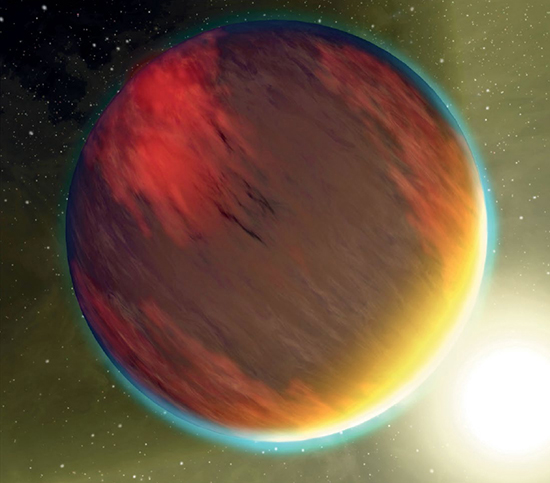~1 Billion
Earth’s Oceans Evaporate
The life cycle of a so-called “main sequence” star like the Sun is quite predictable. Astronomers in the early twentieth century figured out the basic evolutionary track of stars like the Sun by observing countless similar stars at different stages of development. By the middle of the century, theories had also been worked out about the insides of the stars and the nuclear fusion processes that make them shine. And thanks to meteorite research and radioactive dating methods, we know the precise age of the Sun (4.567 billion years) and thus can predict the next milestones of our star’s life.
Hydrogen is converted into helium at the enormous temperatures and pressures in the Sun’s core. Over time, then, the Sun’s hydrogen supply is slowly decreasing. To keep its balance of gravitational (inward) versus radiational (outward) pressure—and thus to stay on the main sequence—the Sun’s core is slowly getting hotter. This increases the rate of nuclear fusion in the core, offsetting the effect of the decreasing hydrogen supply and increasing the Sun’s brightness over time. Astronomers estimate that the Sun’s energy output is increasing by about 10 percent per billion years because of the decreasing supply of hydrogen.
Such a dramatic change in the Sun’s energy output will have a correspondingly dramatic change on the Earth’s climate. In tens to hundreds of millions of years, it will become warm enough that the oceans will start to permanently evaporate, turning our planet into a steamy world. Scientists further predict that within about a billion years, the slow breakdown of all that atmospheric water by sunlight and the subsequent escape of the liberated hydrogen will turn our planet into a bone-dry, inhospitable desert world. Unfortunately, the future is looking too bright.
Some long-term climate modelers think that our planet will become uninhabitable long before the oceans are completely dried up. As the climate gets hotter, more carbon dioxide will get trapped in carbonate rocks, leaving less for plants to use in photosynthesis. Within maybe a half billion years, then, much of the base of the food chain could collapse, making the biosphere overall unsustainable. It’s not a cheery long-term prognosis, but maybe by then our species (or whatever it has become) will have found one or more new beautiful blue water worlds to call home.
SEE ALSO Earth Is Born (c. 4.54 Billion BCE), Earth’s Oceans (c. 4 Billion BCE), Radioactivity (1896), The End of the Earth (~5 Billion)
An artist’s conception of a “hot Jupiter,” among the most common kind of extrasolar planets initially discovered in the solar neighborhood. A billion years from now, as the Sun continues to mature and grow hotter, Earth’s oceans will evaporate, and our planet will become a “hot earth.”
